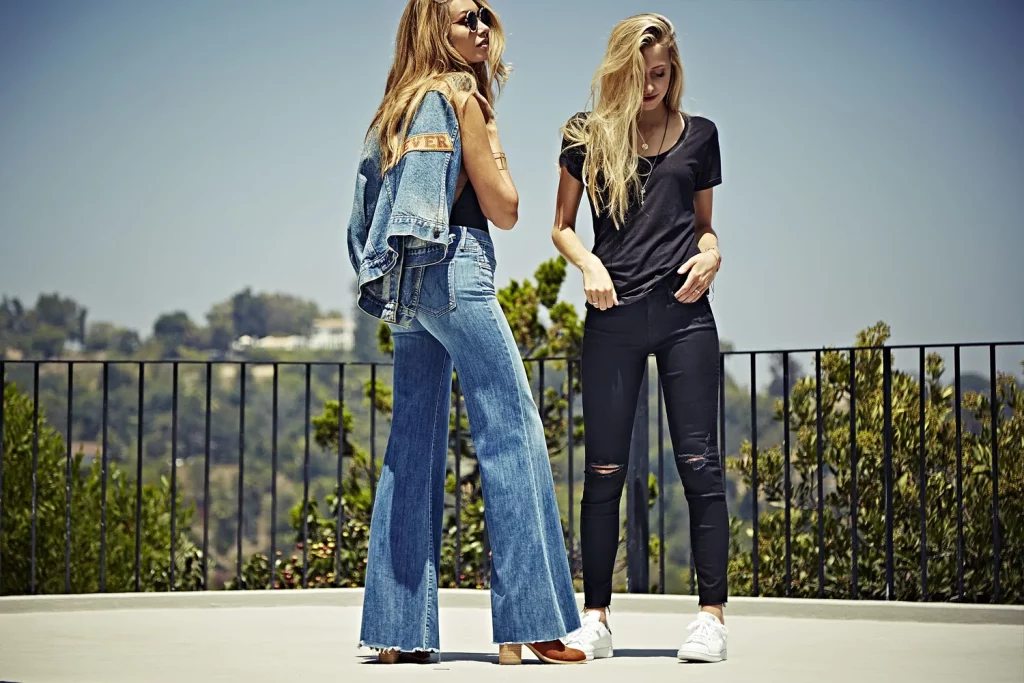New data from McKinsey finds purchasing habits are changing in California, and it’s bringing circular fashion to the forefront.
Last year, New York made headlines when plans for the Fashion Sustainability and Social Accountability Act (the Fashion Act) were announced. The proposed legislation would see leading fashion brands held accountable for their climate impact, imposing fines for failure to disclose.
Under the proposed bill, which earned support from celebrities including Jane Fonda and Leonardo DiCaprio, companies earning more than $100 million in annual revenue would have to disclose details for 50 percent of their suppliers, including where they source materials from and how much revenue comes from which materials. Companies would also have to disclose which parts of their supply chains are contributing the biggest social and environmental impact including energy and water use as well as labor practices.
Similar efforts are underway in Europe, where proposed legislation could help usher in an end to fast fashion and its impact on the environment.
Can California close the loop?
California, though, has been slow to invest in or research closed-loop apparel recycling — a surprising move for a relatively progressive state. But that doesn’t mean action isn’t happening within its borders.
Los Angeles has become a hub for sustainable manufacturing; celebrity-loved label Reformation produces in Los Angeles, as do labels including Whimsy & Row, Christie Dawn, and Los Angeles Apparel, to name but a few. In 2019, California became the first state to ban the sale, donation, or manufacturing of fur, following several city-wide initiatives across the state.

Customers in California are embracing sustainable fashion, too. According to recent data from McKinsey and Company, 92 percent of California shoppers said they would participate in brand-sponsored apparel recycling. Fifty-four percent said they anticipate purchasing more clothing made from recycled materials in the near future, and 15 percent of younger Californians, aged 18 to 24, said they are willing to pay a premium as high as 15 percent for clothing made from recycled materials.
This interest could translate to a high-functioning closed-loop apparel industry for California. According to McKinsey, the economic, environmental, and social benefit of such a commitment could equate to as much as $9 billion a year. That number includes “a total holistic impact of approximately $3.5 billion to $4.5 billion from closed-loop recycling of polyester, which represents nearly 50 percent of apparel textile
fibers thrown away by Californians,” McKinsey’s report reads.
“That translates into a holistic impact of $2.70 for every $1.00 spent. Scaled up across the United States, closed-loop apparel recycling could achieve a total holistic impact of $50 billion to $70 billion,” the report reads.
The report comes after an investigation by The New York Times found organic and sustainable certifications for cotton grown in India to be largely unreliable. The report found widespread fraud across certifying agencies. The Times reported that for at least a decade, NGOs and brands have described India’s organic cotton industry as being “in crisis.”
Could recycling be the answer?
It’s possible, says McKinsey.
“Achieving full circularity requires a local, rather than a global, model, given the inherently local nature of the collection stage of the lifecycle,” it says. “In the context of textile-to-textile recycling, conducting these activities within a given region could have incremental impact (e.g., CO2e, emissions abated, water saved) vs. the costs, while creating local jobs and encouraging economic mobility.”
In regions where there are already strong garment district hubs like Los Angeles, this could create a booming local fashion movement.

But there are hurdles. McKinsey says the industry is very far from having a viable local model for circularity. “The fashion value chain is predominantly linear and global. More than 97 percent of the materials used in fashion products are virgin materials ― derived from natural resources extracted in raw form, e.g., petroleum used for polyester fiber. Approximately 70 percent of yarn is made in and exported by China, India, Vietnam, and the US, and almost two-thirds of the total finished apparel is exported from China, the EU, and Bangladesh.”
But according to the Ellen MacArthur Foundation, upcycling, not recycling, may be the better bet.
“At the moment, clothing just hasn’t been created to be recycled,” Laura Balmond, lead for the Make Fashion Circular initiative at the Ellen MacArthur Foundation, recently told Vogue. “Material selection can be a complex number of different blends – at the moment there’s not really any scaled technologies that separate those out and recycle them into high-quality fibres. There are also the [chemicals] that are used within the fashion industry that causes difficulties.”
Much of today’s recycled materials come from plastic — not other clothes. Parley for the Oceans has been providing yarn from recycled plastic to Adidas, and most recently, Dior. This helps remove ocean-bound plastic from polluting waterways, but it doesn’t do much to reduce the piles of clothing waste.
Sustainable tech innovations
A growing number of brands are moving to mono materials, which makes garments easier to recycle.
“Some brands have also started to introduce fully recyclable garments, such as Stella McCartney X Adidas’s ‘Infinite Hoodie’, made from Evrnu’s NuCycl material and organic cotton, although most of these innovations have yet to reach the scale needed in order to make a significant impact on the industry,” Vogue reports.
There are other technologies aimed at making the apparel industry more sustainable. LanzaTech is pulling CO2 emissions out of the air and turning that into yarn. Its launched limited-edition items with Lululemon and Zara. Efforts are underway too to reduce water and chemicals in materials dyeing; Ralph Lauren is looking to implement an ‘on-demand’ dyeing system that could revolutionize the industry. There’s leather made from cactus, pineapple, and mushrooms.

Back in California, McKinsey says the benefits far outweigh the costs systemwide, even if there are hurdles.
“Unlocking the total holistic impact will require actions to level the playing field, such as forging public–private partnerships, enacting recycling-friendly policies, and encouraging vertical integration in the apparel industry,” the report notes.
“In 2020, Californians bought and wore 510,000 to 530,000 tons of clothing. Some 500,000 of those tons will eventually enter landfills — covering an area about 3.5 times the size of the City of Los Angeles. More than 97 percent of the textiles used in this clothing are virgin materials. Less than one percent of the materials worn today will resurface in clothing manufactured tomorrow,” the report reads.
“Such waste requires transformative change. The key lies in circularity — specifically, in building a closed-loop for recycling materials back into the manufacturing process, reducing both waste and reliance on natural resources.”
Related on Ethos:


